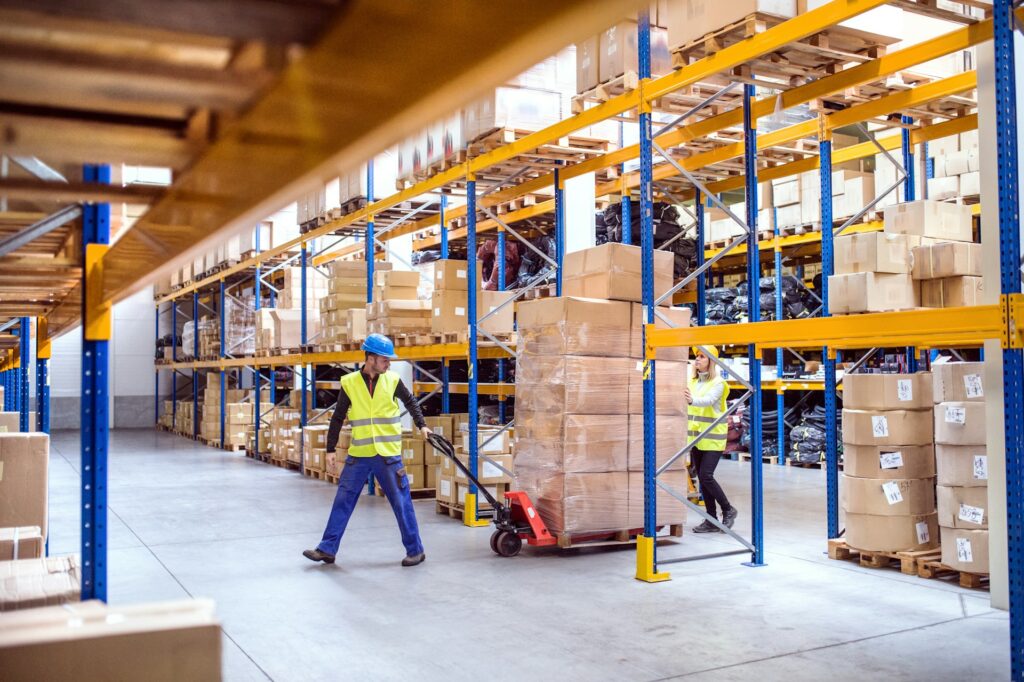As industries across the globe continue to evolve, the demand for more efficient, reliable, and cost-effective packaging solutions has never been higher. Strapping machines, which play a key role in securing packages for transport and storage, are no exception. Over the years, these machines have undergone significant improvements, becoming faster, more precise, and more adaptable to the diverse needs of various industries. However, the future of strapping technology looks even more promising, with advancements in automation, artificial intelligence (AI), and smart packaging set to revolutionise how businesses approach packaging and logistics.
- Advancements in Automation
Automation has already transformed many aspects of the packaging process, and strapping machines are no exception. In 2025 and beyond, we expect to see even greater strides in automated strapping solutions. Strapping machines are becoming increasingly autonomous, with many modern models capable of performing strapping tasks with minimal human intervention.
In the future, fully automated strapping systems will likely become more widespread. These systems will be able to integrate seamlessly into automated production lines, operating alongside other packaging machines such as conveyors, stretch wrappers, and labellers. By doing so, they’ll create a fully automated packaging line that can process thousands of packages per day, with little to no manual input required.
This level of automation will increase efficiency and speed and reduce the potential for human error, ensuring that packages are consistently strapped securely and correctly every time. This means faster throughput, reduced labour costs, and improved overall productivity for businesses. As the need for speed and accuracy continues to rise, automation in strapping machines will play a key role in shaping the future of packaging.
- AI Integration for Smarter Operations
Artificial intelligence (AI) is entering virtually every industry, and packaging is no exception. In the context of strapping machines, AI has the potential to enhance both performance and flexibility significantly.
In the future, AI-powered strapping machines can learn from their environment and adapt to various packaging needs. For instance, AI can be used to optimise strapping tension based on each package’s size, weight, and shape. The machine could automatically adjust the strapping parameters for different types of goods, ensuring that the right amount of pressure is applied every time. This would help reduce damage to products and the amount of wasted material from over-strapping.
Additionally, AI could be used to predict maintenance needs, analysing machine data to identify potential issues before they cause a breakdown. With predictive maintenance, businesses could schedule repairs and maintenance proactively, avoiding costly downtime and extending the lifespan of their strapping machines.
AI will also enhance the efficiency of the entire packaging process. With AI integration, strapping machines can optimise their operations in real-time, adjusting speed and performance based on demand and production needs. This flexibility will allow businesses to handle varying volumes of goods and streamline the packing process, regardless of whether they deal with large or small shipments.
- Smart Packaging and IoT Connectivity
Innovative packaging is another key trend shaping the future of strapping machines. Smart packaging involves embedding technology into the packaging to provide real-time data and track products throughout the supply chain. In the context of strapping, this could include integrating sensors and RFID tags into the straps.
By embedding these sensors into the strapping process, businesses could gain valuable insights into the condition of packages during transit. For example, sensors could detect if a package has been tampered with or exposed to environmental factors such as excessive heat or humidity. This would provide added security and allow businesses to track the integrity of their goods throughout the entire shipping process.
Additionally, the Internet of Things (IoT) will play a significant role in the future of strapping machines. IoT-enabled strapping machines will be able to communicate with other equipment in the packaging line and with centralised monitoring systems. This connectivity will allow businesses to track machine performance, monitor production data, and optimise packaging processes in real time. By integrating IoT technology, strapping machines will become smarter, more efficient, and better able to adapt to changing demands.
- Sustainability and Eco-Friendly Materials
As environmental concerns continue to grow, sustainability will be a key consideration in developing future strapping machines. Consumers, businesses, and governments increasingly prioritise eco-friendly practices, and packaging is no exception. Strapping machines will need to evolve to accommodate new, more sustainable materials that reduce waste and minimise the environmental impact of packaging.
In the coming years, we can expect strapping machines designed to work with biodegradable, recyclable, and even compostable materials. This will enable businesses to meet growing sustainability standards while continuing to ensure that their goods are securely packaged. Additionally, advancements in material technology may lead to the development of strapping materials that are just as strong as traditional plastics but with a lower environmental footprint.
- Customisation and Versatility
As businesses continue diversifying their product offerings and expanding into new markets, the demand for versatile packaging solutions will increase. Future strapping machines will likely offer more customisation options, allowing businesses to easily adjust the machine settings to handle different sizes, shapes, and types of products. Whether it’s a small, delicate item or a large, heavy package, strapping machines will be able to adapt to meet the specific needs of each shipment.
The ability to easily switch between different types of strapping materials and configurations will be crucial for businesses looking to optimise their packaging operations. Strapping machines will become more versatile, accommodating a broader range of packaging needs and allowing companies to reduce downtime and improve flexibility.


